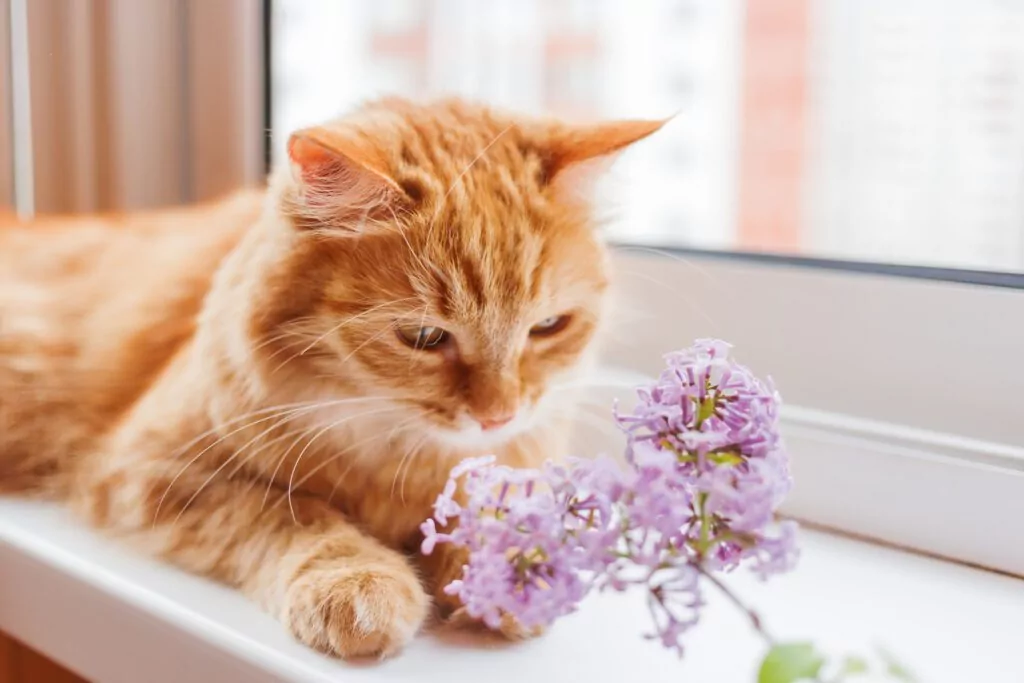If you have a kitten, or if you’re thinking of bringing one home soon, you may be worrying about training your pet properly. Although training a kitten is not the same as training a puppy, there are still many tips and tricks to keep in mind so you can set your kitten up for success.
In the article below, you’ll find a list of 6 tips that can help you and your kitten both during your pet’s first few months of life. You can use this information to figure out when and how to train your new feline friend properly.

1. Start with Potty Training
Potty training your kitten is the first and most important step in cat obedience training. To potty train, first make sure you choose a litter box of an appropriate size—ideally, a kitten-sized box. Give your kitten her own litter box for the first few months without expecting her to share with other cats in the household. Make sure to choose kitten-safe litter for now.
Every time your cat wakes up from a nap or finishes eating and drinking, put her in the litter box. If she starts pawing in the box, this is a great sign. If she doesn’t, you can very gently rake her paws over the litter to simulate pawing.
2. Work on Furniture Scratching and Spraying
Furniture scratching and spraying behaviors are both common problems with housecats. It can be challenging to train your kitten to stop doing both of these common bad habits, but it is still possible.
It’s important to watch your kitten closely every time she is free in the home. This way, you can catch her the moment she starts to scratch (or spray) and redirect her attention to something else. If you don’t catch the behavior every time it happens, it becomes much more difficult to teach your cat to stop performing it later in her life.
3. Train Away Aggression
Some cats and young kittens are aggressive toward humans and other animals. If your kitten is showing signs of early aggression, it’s important to train this away before the trait truly takes hold in your cat as an adult.
Give your cat time to come to other animals in the home, or other humans. Every time your cat spends a few seconds calmly in the presence of the other animal or human, give her a treat. Over time, she will come to realize that being polite toward others means she gets showered in treats, which is much better than being aggressive.

4. Practice Around the House
Once you’ve taught your cat a few obedience basics, it’s important to practice them around the house and not just in the same spot all the time. Your kitten may mistakenly believe she’s only supposed to behave properly in one room of your home if you don’t practice elsewhere!
Work your way through the house, trying a different room each day of the week. Don’t overdo it; ten or fifteen minutes of practice per day is more than enough for a young kitten, and she will learn better in shorter bursts.
5. Try a Clicker
It’s more common for dogs to be trained with clickers than cats, but it isn’t impossible for you to train your cat with a clicker, too. If you’re trying to teach your cat to pay attention to you or perform a simple action (such as “sit”) instead of misbehaving, a clicker can work wonders.
Begin by clicking and giving your cat a treat every time you click. From there, the cat will quickly associate the clicking noise with receiving a treat and will try to do whatever she can to receive a click. You can easily mark, and train “sit” with a clicker noise.
6. Redirect Misbehavior
Just like with dogs, it’s important to redirect misbehavior from kittens and cats. Cats are easily frightened by punishment, which can cause them to hide from you or even begin to associate you with fear, anxiety, and aggression. Instead of punishing a misbehaving cat, look for other options instead.
For example, if you’re struggling to teach your cat to stop scratching the furniture, give her a toy she can play with instead every time you tell her “no.” Although kittens will be stubborn and may continue trying to scratch the furniture for a while, she will eventually learn what is acceptable and what isn’t.
Kitten Training Requires Patience and Persistence
As you can see, kitten training is quite different from puppy training, but it still requires a lot of patience and persistence from you. By taking your time and working slowly with your kitten, you can give her the best possible chances for success and can help her learn to be a well-behaved adult cat, too.
If you have any further questions or concerns, talk to your veterinarian by calling OrlandoVets or booking an appointment online.
Share This Post
Recent Posts
About OrlandoVets
We are a group of veterinary hospitals located in the greater Orlando area. Our purpose is to enrich the quality of lives of pets and their families through personalized partnerships with their veterinarian.


